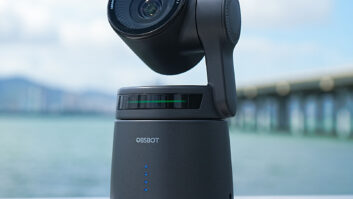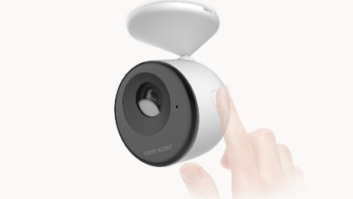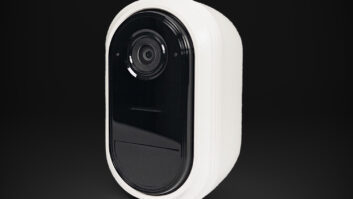TWICE:What are the next battleground features for point-and-shoot digital cameras?
Peck: Well I think we’ve pretty much maximized the size of the LCD screen. If you make the screen any bigger than 3 inches, you’re going to have to start making the cameras bigger. I think the 2.5-inch is probably going to be the sweet spot for the business. You know 3-inch is very nice to look at, there are limitations. They can’t put an optical viewfinder on it. As to the megapixel race, you’ve got 8-, 10-megapixel cameras. I’m not sure that the average consumer needs a whole lot more than that.
Plus there are new technologies that are not part of the sensor chip or the camera itself, but the brains of the camera. The camera can be smart enough to know that I’m doing sports, that I’m shooting at night, that I’m taking a family portrait and so on. I think the cameras are beautiful today. I’m not sure they could get much smaller than they currently are. And customers respond to style and design as well.
Lundeen: In an innovation sense we’re also looking at the processor and really optimizing around lens and image sensors, using the processor to pull the most intelligence from the camera. So because we build all three, we can integrate the way that those elements interact with each other. Our processing system now this fall does things like understands if a person’s to the right of a frame then that’s the area you want to focus on. It understands that there are different depths so it can optimize the flash. We’re asking our processors, within our cameras, to do a lot more to automate towards a better quality image.
Peck: This past year we had an expo in New York City. We showed future technologies. One of them was smile recognition where the camera can recognize when somebody is smiling. And as soon as they smile, it takes the picture. These are things that can make the camera smarter, more intelligent and help you get better photos.
Carr: We see two areas. First is ISO. ISO will give you better pictures every time, and we need to do a lot more work in that area. You go back again to the film world. When Kodak came out with Max film at 800 speed it was for low light, it was for action, it was for everything. It was your everyday film. The cameras today, the ISO range is all over the place and auto on one camera could be a different ISO on another camera.
The second thing is the metadata that’s imbedded in the image. How are we taking advantage of that metadata as you move the picture from beyond the camera to other devices, and how are you adding to that metadata, such as where the scene was shot. Why isn’t GPS in a camera? It can determine what’s in the scene — Are there smiles, are there birthday cakes, faces, etc.? Is that face in another picture? How do you get that picture to talk to the other picture because it’s the same face?So metadata is something that customers have no idea even exists. But if you look at the future, the next chapter of digital, metadata is going to be the key to organizing and learning and making these pictures teach each other where they should go and how they should be automatically organized.
Peck: And to add to that, cameras can be smart enough to recognize, “OK, these are Nancy’s kids.” They will organize them in a file automatically, saying, “OK, these are the kids.” This is the sports team pictures. These are my work photos. The camera could be smart enough to recognize faces and put them into the proper electronic photo albums.
Carr: Like Gail said, it’s all in the chip. It’s all algorithms.
Lee: I think one of the keys though is how the industry is going to take this and make it so that it’s user friendly. I mean one of the things that we’ve seen with Wi-Fi, face recognition that we have in our cameras and other things, is trying to get the consumer to really understand the technology. The challenge will be to make all this technology seamless and really go to what the end photo is and how easy is it to get there. I think that a big challenge for the manufacturers is to not overwhelm the customer with all this technology.
Hoffman: I think it’s also the refinement of what they’ve got today. It’s getting a better image in low-light situations. It’s getting a better picture even if you are moving, with image stabilization. It’s faster shutter speed, faster read and write technologies, so you’re getting faster shot to shot speeds. I think that’s also what they’re going to be looking for. Not just the leaps in technologies, which we’ve all kind of become used to seeing, but these little steps to also improve the quality of the image that they’re taking.
Lundeen: We as an industry can’t push technology for technology’s sake. We know that, and we know that what the retailer is asked is not a technology question by a consumer. They’re asked a question like, “How can I take a picture of my child while they’re sleeping without using a flash?”
Campbell: It comes down to the overall experience. It’s certainly about being seamless in the process, whether it’s improved speed, whether it’s improved battery life. That’s one of the big complaints that first time purchasers have. They come back and they’re buying cameras that second time, and they want their batteries to last.












